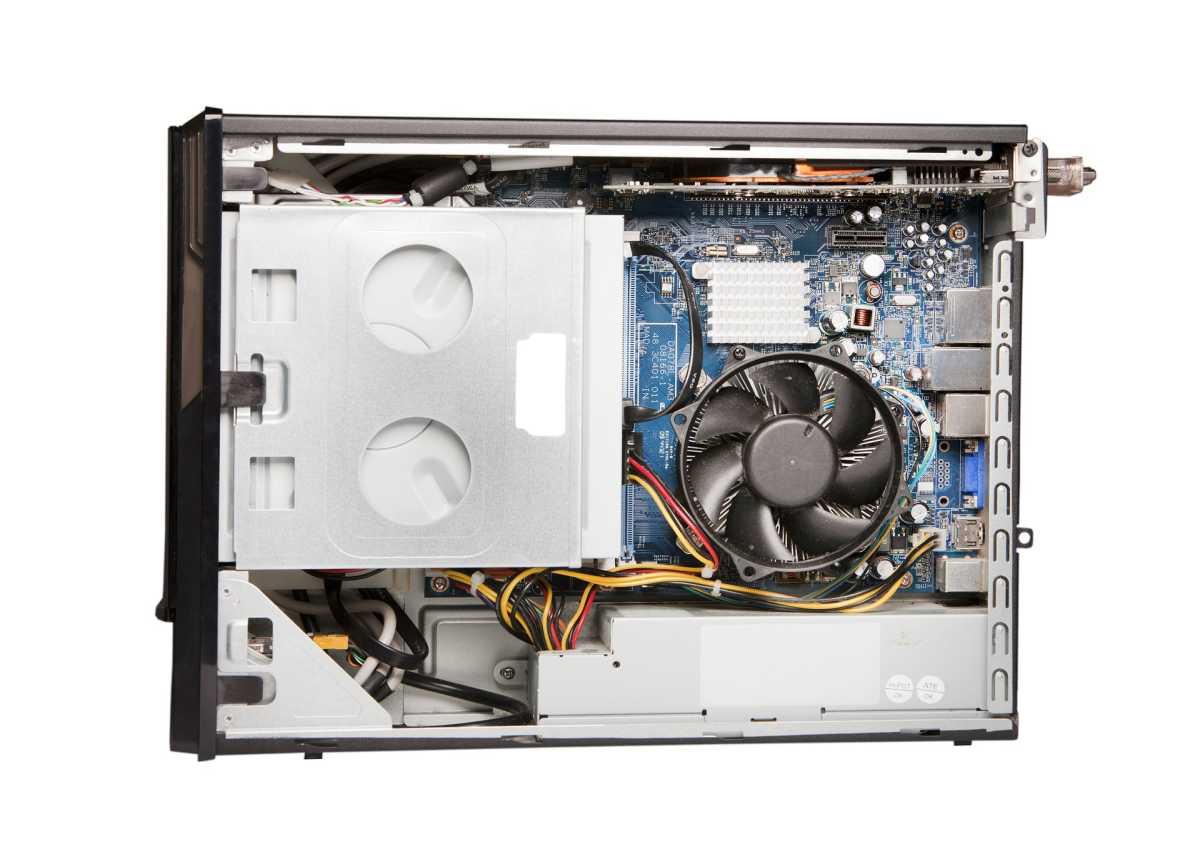Ventiva’s fanless PC cooling technology is evolving from a curiosity to what appears to be a genuine game-changer: not only is it demonstrating 45W cooling capabilities with two partners, but Ventiva is also claiming that its ICE9 system can cool up to 100 watts of thermal energy as well.
Dell — the partner with which Ventiva originally worked with — is one of the companies interested in the 45W cooling solution. The other is Compal, a “white box” contract manufacturer that builds PCs for any number of vendors who then claim them as their own.
Ventiva surfaced late last year, and we sat down with company executives at CES 2025. Rivals like Frore or xMEMS use a vibrating membrane to replicate the actions of a fan, moving cool air over heated elements within a PC and then outside the system. Ventiva essentially ionizes the air, which is pushed away from a charged wire and creates airflow.
The amount of air moved, and how much cooling is applied, depends on a few factors: the size of the cooling component (which Ventiva calls an ICE), how much charge is applied, and how many ICE devices are working together. At CES 2025, however, Ventiva was talking about moving just 25 watts’ worth of thermal energy, enough for the 15W of an Intel Core Ultra “Meteor Lake”-U chip, for example., but not quite enough for the 28W “Arrow Lake” chips or the rival Ryzen AI 300 processors, whose TDPs are also about 28W.
By pushing up to 40W, Ventiva’s partnerships with Compal and Dell would allow both companies to design laptop reference designs that could accommodate a wider variety of PC processors, including while they were running in excess of their rated TDP in turbo mode. The ICE technology is less than 12mm high, allowing thinner laptops to be made.
Ventiva is also looking at the future. The company is demonstrating a 100W test laptop at Computex 2025 this week, which it will presumably use to strike even more partnerships.
“AI-driven laptops are transforming the way we work, create, and play, but their increasing thermal output requires a new level of device heat management,” said Carl Schlachte, chairman, president and chief executive of Ventiva, in a statement. “This is our highest-performing thermal management system to date, enabling laptop OEMs and ODMs to push power to the limit, and stay totally cool, under any workload, from 3D design to AI development to immersive game playing.”
While 100 watts of cooling is well below what gaming laptops can consume under full load, there’s certainly a chance that a midrange laptop might be able to use Ventiva’s solution for some sort of gaming application. And boy, wouldn’t a silent gaming laptop — without the need to dunk it in a vat of coolant — be a thing of beauty?
via PCWorld https://www.pcworld.com
May 20, 2025 at 05:34AM


